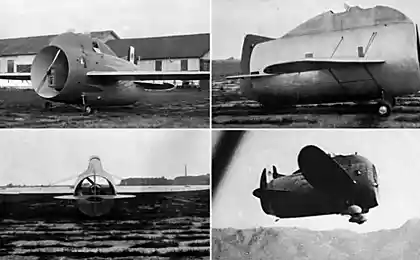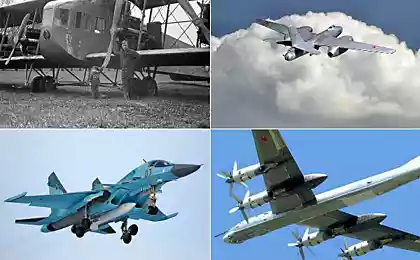644
Inside Il-76T.
Il-76T - civil modification of the famous military transport aircraft. This board (RA-76460), released in 1981, operated by "Aeroflot", decommissioned in 1995. Who is this plane students take a practical course introduction to the profession. I suggest you get acquainted with this giant and carefully examine everything.
IL-76 was developed in the Ilyushin Design Bureau in the years 1966-1971 under the leadership of Heinrich Vasilyevich Novozhilov.
Will be 36 photos + text source.

It was the first Soviet military transport aircraft with turbojet engines.

The wingspan of the aircraft is 50, 5 meters, which exceeds the length of the fuselage.

Unlike IL-76T on the fundamental modification - the lack of machine-gun in the rear cockpit.
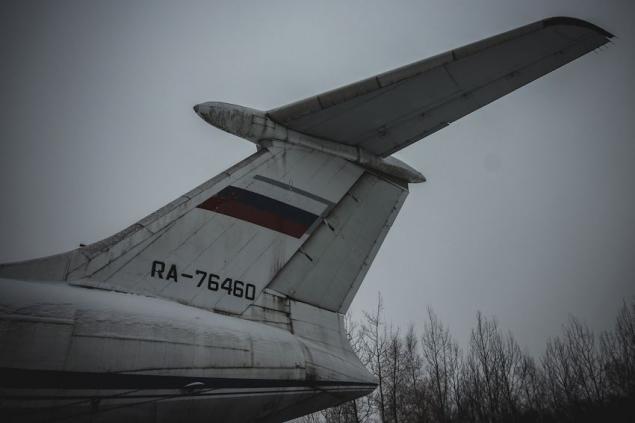
Through a hatch in the front passenger fuselage Let us enter into the cabin.

Right at the entrance is remote flight operators for transport equipment. That panel controlling the supply of oxygen to the crew and passengers in the event of depressurization.

This remote opening hatches, lighting controls and cabin pressure. This also displays the basic data about the flight

Length of cargo cabin - 24, 5 m, its width and height - 3, 4 m.

The sides of the panels hidden electronic equipment.

All along the bay stretches beam hoist with lifting capacity of 2, 5 m.

The transport compartment ends germostvorkoy separating it from the cargo hatch. Note that the red beam continues on the leaf.

Germostvorka can be raised, freeing the passage for cargo. At the same time it is available at the rail stands in a horizontal position and allows the crane to drive into the rear compartment.

Cargo door ramp is closed, and three doors: the middle, opening up and the two lateral petal type, opening outwards. With this at the opening of the hatch aerodynamics of the aircraft remained almost unchanged.

The tail has a doorway inside the fuselage, which is visible through the mechanization of the keel.

A top leaves narrow gap called the "Prospectus Novozhilova." It passes through the keel and ends outside the hatch.

Now look around the cockpit. It was bunk, I sat at the bottom of the navigator. In the panel on his chair mounted displays and control panels two onboard radar: one designed for viewing the Earth's surface, the second for monitoring the air situation.

And below - viewing window with panoramic views.

Above the working table navigator panels and LEDs are inertial navigation systems, radio systems far and near navigation, Doppler velocity and drift angle, radio compasses ARK-15M, the same as in command pilots and the flight navigation and flight instruments.
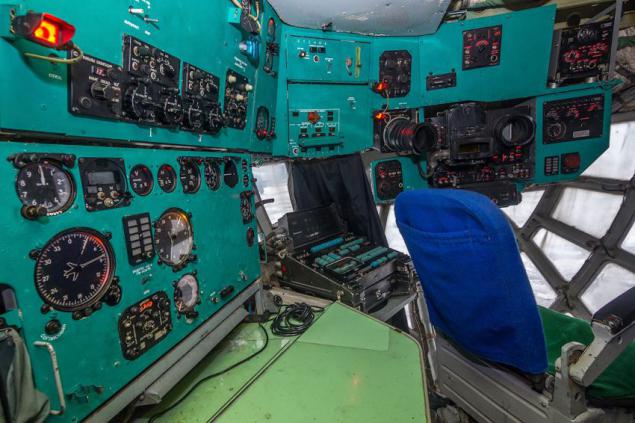
KP2-12A control unit.

Keyboard control board digital computer "Dwarf-A." The navigators called it "piano" because of the large hard keys that need to be pressed with your fingers badly.
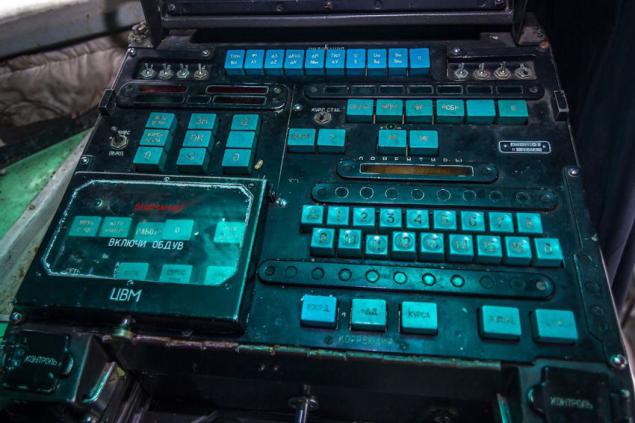
And hiding behind the chair of a navigator compartment fascinating view their equipment.

22.
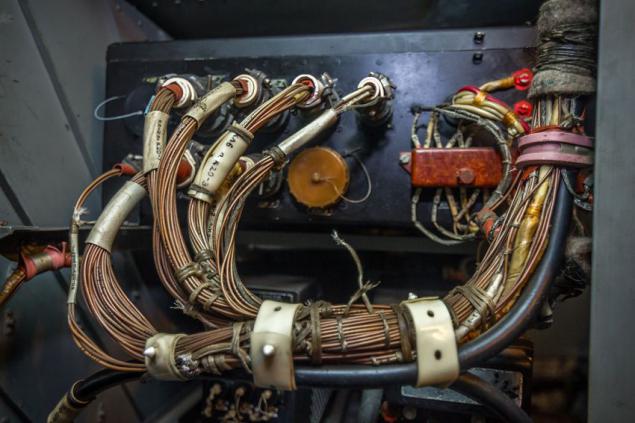
23.
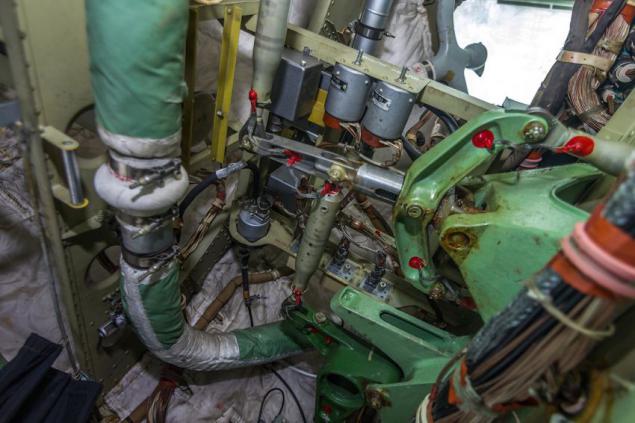
24.

We climb the ladder to the upper tier.

Trap ends in front of the cockpit cubbyhole.

For pilots and flight engineer, radio operator sat down seen their chairs.

Workplace radio operator, on the table is seen key to extract "Morse code." The front panel mounted remote control station. In the right pane of the radio operator monitors the power supply of the aircraft. In case of flight in hot countries provided a fan.

Workplace flight engineer was behind midway between the pilots. He starts the engine. This, too, was his control.

Place pilots. Hanging over the fascia forward looking radar KP-3A, which can move left and right. With its help pilots control the traffic situation.
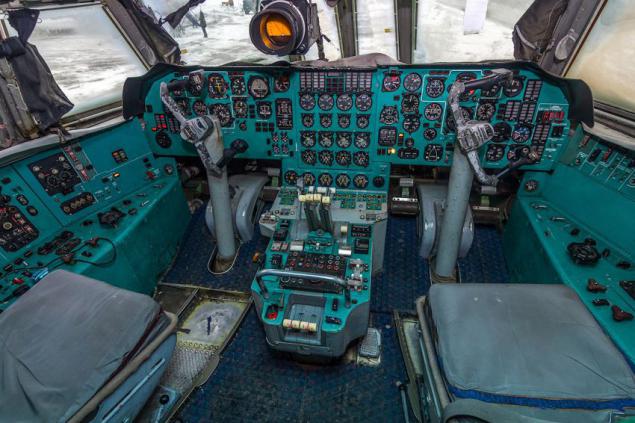
At the helm seen pedal. Big serve to turn the rudder in flight, and run and run - to control the rotation of the nose landing gear, small - run brakes
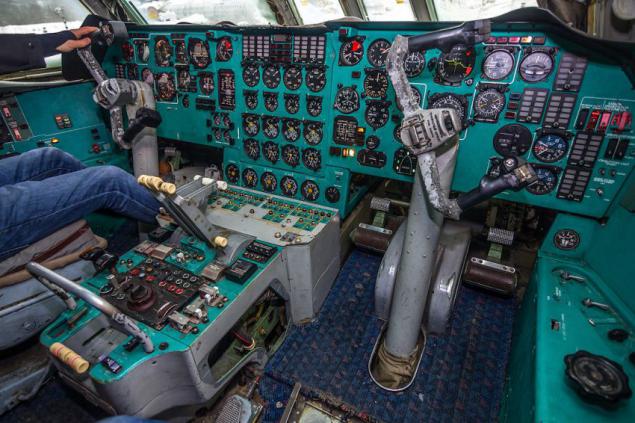
Instruments and signs displaying information about the spatial position of the aircraft. This command and the flight navigation and flight instruments, needle indicator and barometric altimeters, light, bearings, indexes speed and acceleration.

The middle panel includes the motor control and control the autopilot. Above the visible sensors monitoring engine.
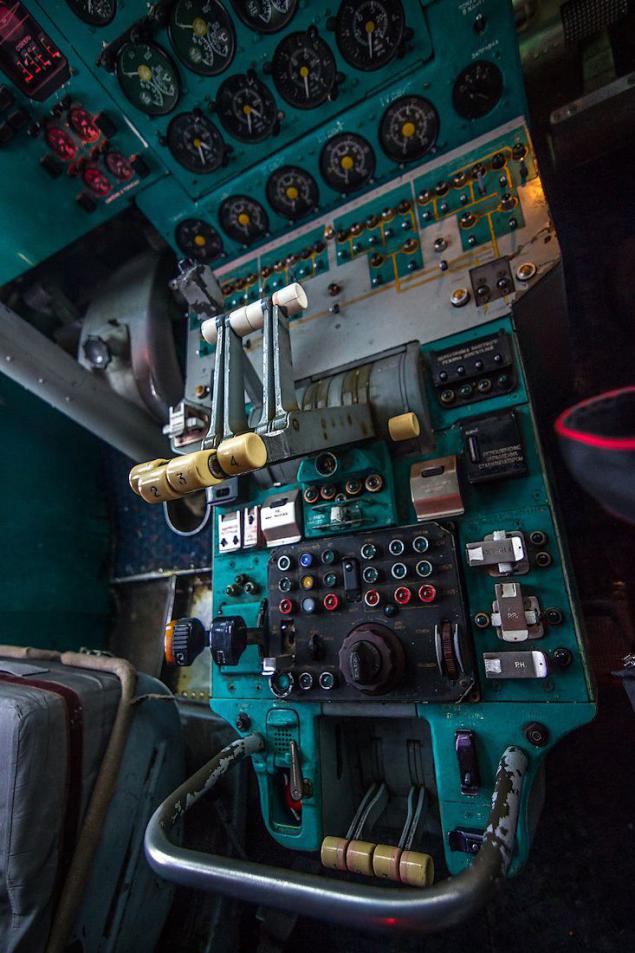
Glasses course review and blowing system. Review here on the order of less than a space navigator.

In the left pane of the PIC installed control panels Jets defendants recorder, intercom system, flight data recorder. Round handle serves to rotate the nose landing gear during taxiing.

This inspection Il-76T can be considered successful. ©
All!

Source:
IL-76 was developed in the Ilyushin Design Bureau in the years 1966-1971 under the leadership of Heinrich Vasilyevich Novozhilov.
Will be 36 photos + text source.

It was the first Soviet military transport aircraft with turbojet engines.

The wingspan of the aircraft is 50, 5 meters, which exceeds the length of the fuselage.

Unlike IL-76T on the fundamental modification - the lack of machine-gun in the rear cockpit.

Through a hatch in the front passenger fuselage Let us enter into the cabin.

Right at the entrance is remote flight operators for transport equipment. That panel controlling the supply of oxygen to the crew and passengers in the event of depressurization.

This remote opening hatches, lighting controls and cabin pressure. This also displays the basic data about the flight

Length of cargo cabin - 24, 5 m, its width and height - 3, 4 m.

The sides of the panels hidden electronic equipment.

All along the bay stretches beam hoist with lifting capacity of 2, 5 m.

The transport compartment ends germostvorkoy separating it from the cargo hatch. Note that the red beam continues on the leaf.

Germostvorka can be raised, freeing the passage for cargo. At the same time it is available at the rail stands in a horizontal position and allows the crane to drive into the rear compartment.

Cargo door ramp is closed, and three doors: the middle, opening up and the two lateral petal type, opening outwards. With this at the opening of the hatch aerodynamics of the aircraft remained almost unchanged.

The tail has a doorway inside the fuselage, which is visible through the mechanization of the keel.

A top leaves narrow gap called the "Prospectus Novozhilova." It passes through the keel and ends outside the hatch.

Now look around the cockpit. It was bunk, I sat at the bottom of the navigator. In the panel on his chair mounted displays and control panels two onboard radar: one designed for viewing the Earth's surface, the second for monitoring the air situation.

And below - viewing window with panoramic views.

Above the working table navigator panels and LEDs are inertial navigation systems, radio systems far and near navigation, Doppler velocity and drift angle, radio compasses ARK-15M, the same as in command pilots and the flight navigation and flight instruments.

KP2-12A control unit.

Keyboard control board digital computer "Dwarf-A." The navigators called it "piano" because of the large hard keys that need to be pressed with your fingers badly.

And hiding behind the chair of a navigator compartment fascinating view their equipment.

22.

23.

24.

We climb the ladder to the upper tier.

Trap ends in front of the cockpit cubbyhole.

For pilots and flight engineer, radio operator sat down seen their chairs.

Workplace radio operator, on the table is seen key to extract "Morse code." The front panel mounted remote control station. In the right pane of the radio operator monitors the power supply of the aircraft. In case of flight in hot countries provided a fan.

Workplace flight engineer was behind midway between the pilots. He starts the engine. This, too, was his control.

Place pilots. Hanging over the fascia forward looking radar KP-3A, which can move left and right. With its help pilots control the traffic situation.

At the helm seen pedal. Big serve to turn the rudder in flight, and run and run - to control the rotation of the nose landing gear, small - run brakes

Instruments and signs displaying information about the spatial position of the aircraft. This command and the flight navigation and flight instruments, needle indicator and barometric altimeters, light, bearings, indexes speed and acceleration.

The middle panel includes the motor control and control the autopilot. Above the visible sensors monitoring engine.

Glasses course review and blowing system. Review here on the order of less than a space navigator.

In the left pane of the PIC installed control panels Jets defendants recorder, intercom system, flight data recorder. Round handle serves to rotate the nose landing gear during taxiing.

This inspection Il-76T can be considered successful. ©
All!

Source:

